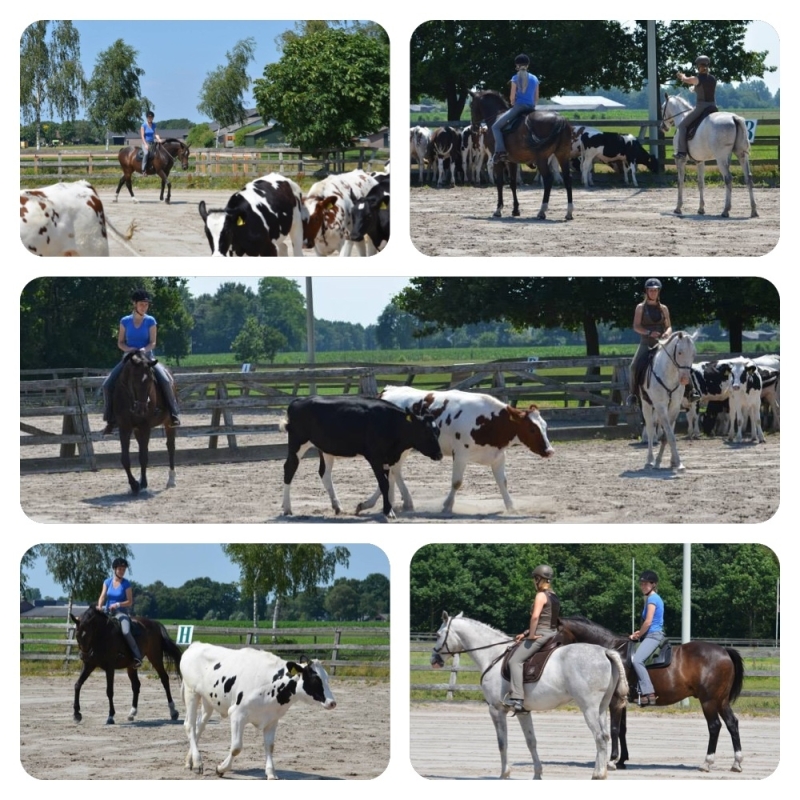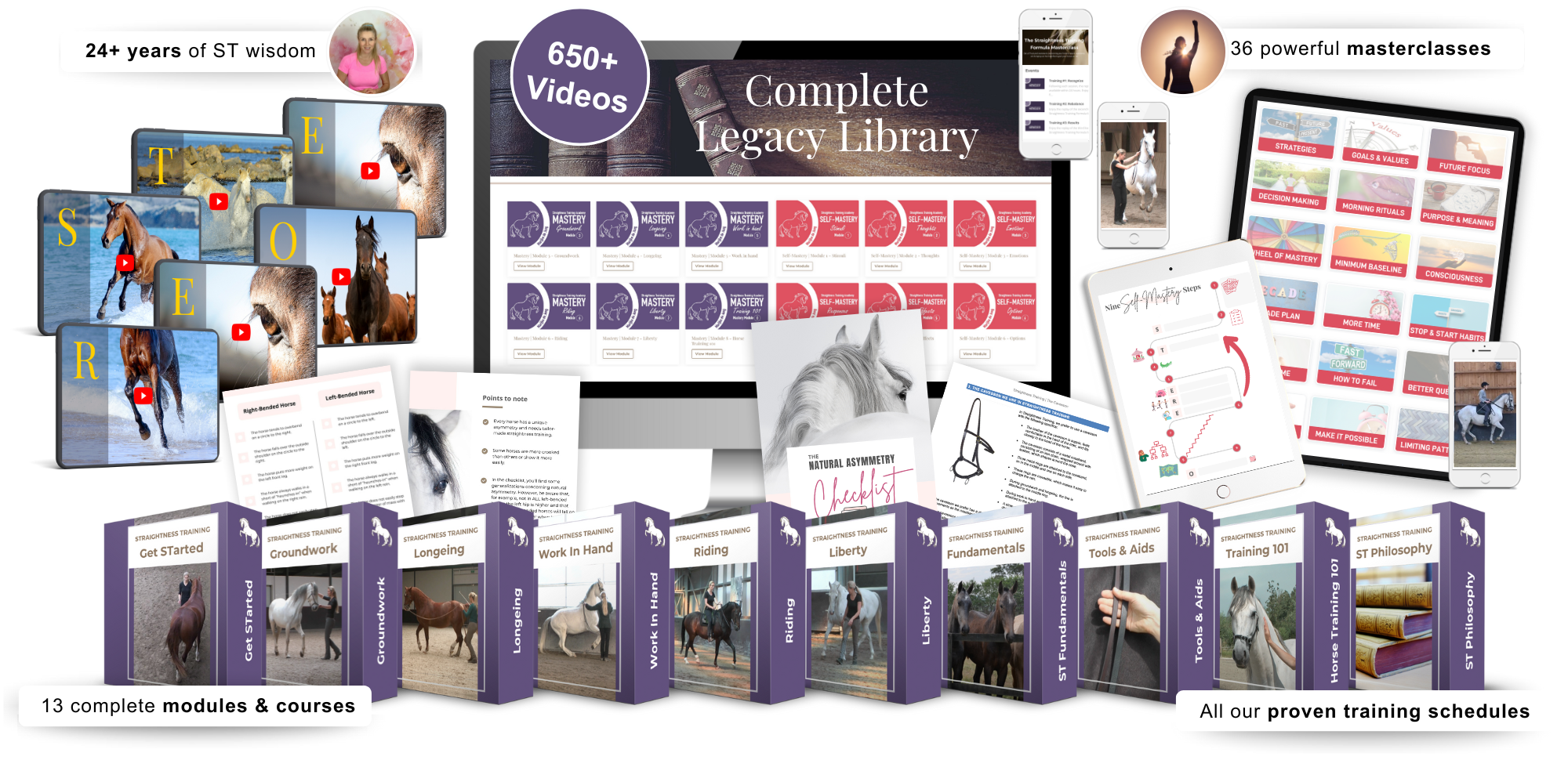- Strategy #1: Meet Your Horse Needs
- Strategy #2: Understand Language & Learning
- Strategy #3: Strengthen the bond
- Strategy #4: Be a bringer of gifts
- Strategy #5: Motivation is Key
- Strategy #6: Quality over quantity
- Strategy #7: Give the Brain Time to Digest
- Strategy #8: Stop Always at the Highlight of the Day
- Strategy #9: Add Purpose To His Life
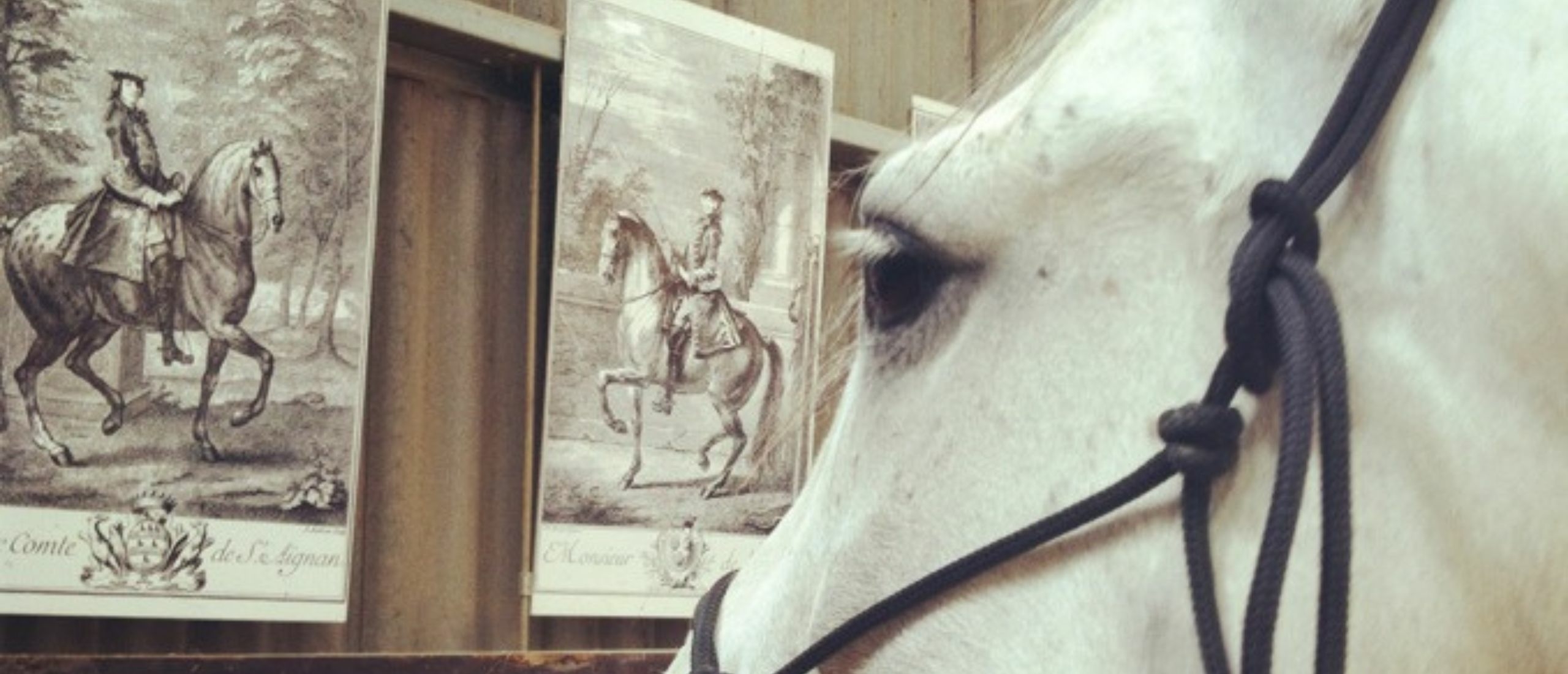
9 Strategies on How To Become a Personal Development Coach
The aim of Straightness Training is not only to develop the natural forces and physical capabilities of the horse to perfection through gradual and appropriate exercises, but also to develop his mental, emotional and spiritual capabilities.
In the long, intimate relationship with his Personal Fitness Trainer, the horse becomes infinitely intelligent, because he has so much to learn and is continuously asked to observe the lightest hint from the trainer.
If you not only focus on the body, but also on the mind, emotions and spirit, and allow the horse to learn and to digest the exercises in his brain and allow him to do the exercises willingly and not make him do it, then your horse exercises his mental, emotional and spiritual powers together with his physical ones.
And in that case he becomes more attached toward you as his trainer to the same degree that he increases in skillfulness in his lessons.
Once training has been completed, the horse performs his lessons, from the circle to the levade, with a type of happy and proud self-confidence.
Here are some tips on how to become the best coach you can be:
Strategy #1: Meet Your Horse Needs
Your horse will only feel well, if you are meeting his natural needs. A horse needs to move during the day, eat small bits, be together with other horses to experience a sense of well being. Only then he will be able to open his mind to you and to learn new things.
Strategy #2: Understand Language & Learning
To be successful with Straightness Training we have to understand that the brain of the horse is structured differently than the human brain, so horses and humans are wired differently. We also need to know how horses learn best, because once we know how horses learn, we can start to teach them things (exercises, aids, cues).
- Click HERE to read more about the Horse’s Brain >>
- Click HERE for the Language of the Horse >>
- Click HERE to 7 Ways how Horses Learn >>
Strategy #3: Strengthen the bond

It’s important that the horse values the relationship with you, before we start teaching and training, because it will directly affect the horse’s motivation to perform (see strategy #5). So invest time in strengthening the bond. And that doesn’t involve ‘training’ and ‘doing’ things.
So take care not to set high goals for your horse and to act like a ‘human doing‘ , but remain a ‘human being‘ and take time to ‘just be‘ with your horse and spend time by just hanging out together, doing nothing. This is a simple strategy to strengthen the bond and to open the horse’s mind to you .
Strategy #4: Be a bringer of gifts
One other simple strategy to strenghten the relationship is to always come bearing ‘gifts’, for example a carrot or an apple. Horses learn by assocation (classical conditioning, see tip 1), so make sure your horse associates you with fun and pleasure, not only with training and hard work! Always deliver the ‘gift’ by hand (don’t put it on the ground or in a bucket) to strongly link the pleasureable gift to your intent. This way you’ll become the person who is very positively anticipated by your horse, and this eagerness of mental state is needed once you start training your horse.
Strategy #5: Motivation is Key
Motivation is the key to success in training your horse. We want the horse to become cooperative and willing and eager to perform.
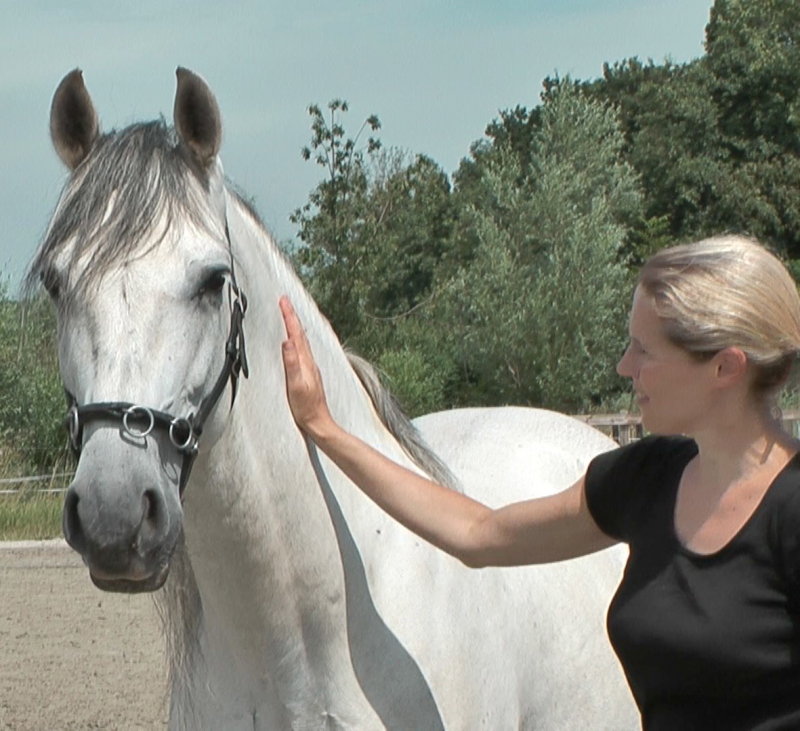
Once your horse is focused on cooperating with you, that assistance will make up for all shortcomings on your part. And the most perfect guidance will be wasted on the horse who doesn’t care! So it’s not only about ‘training’, it’s also about ‘motivating’.
So once we have developed a good relationship, we need to know how we can motivate our horse and how we can reinforce desired behavior. We can reinforce behavior in several ways, but a very powerful way is using a combination of ‘negative’ with ‘positive’ reinforcement. In this context, ‘negative’ means ‘subtracting’ and ‘positive’ means ‘adding’.
So in horse training this simply means a combination of Release + Reward;
- So we take away our strong focus and intent, we take away our energy and “air” pressure, and we take away any physical pressure with our hand/leg/seat,
- Plus we add pleasureable stuff: we can say ‘good boy’, we can pet the horse, we can give the horse a treat.
Strategy #6: Quality over quantity
Be satisfied with the slightest effort the horse makes to do what you are asking! And the moment he gives his best possible try, release all pressure and reward him.
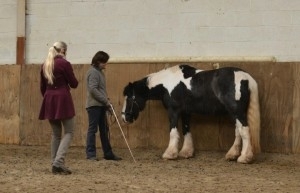
This will really motivate the horse and increase his eagerness to ‘figure out’ what you are asking. The more consistent you are with this concept, the more the horse knows that there’s something to figure out, and once he found it, he will hit the jackpot.
When you are asking too much, too soon, this can be very demotivating: Imagine you are teaching your horse to do haunches-in in hand (see picture on the right). If you require your horse to do the whole long side, before considering the exercise a success, than you’ll end up with a large amount of steps (quantity), but not only one step was good (quality). Or maybe one step was good, but the lesson goes unlearned, because the horse will not recognize this step as ‘good’, because you didn’t reward it. When you go for quantity too much, too soon, this will be frustrated for both horse and rider.
You need to make sure your horse will understand and recognize that he gave you the desired response, so go for quality and go for one step at a time!
Strategy #7: Give the Brain Time to Digest
Once your horse gave you one step with quality you should always release+reward. And a very powerful strategy is to give your horse a long break after this succesful step to give your horse’s brain time to digest what he just did.
So you should stop and let your horse lick and chew, blink the eyes, lower his head, shake his neck, and wait for him to ‘check in’ with you again before you continue. Because all these little signals tell you that the horse has completed the digestion.
If you stop after they did right, but start petting them or getting busy you break the thought, you disturb the digestion process and lose the opportunity that the horse is really ‘getting’ it. So keep the ‘reward’ small (only voic), don’t touch him, don’t pet him, and wait for the signals before you continue.
Strategy #8: Stop Always at the Highlight of the Day
If the horse has really learned something or shows a real ‘breakthrough’, the training must be stopped immediately so you can ‘anchor’ the learned behavior in the mind and body of the horse.
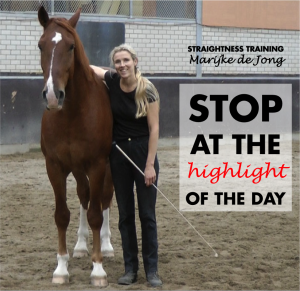
Because if you repeatedly ask for the exercise, but the exercise has not yet been understood by the horse, the quality may be less and less or the exercise could even fail. And in that case the horse has learned nothing. So if a horse is still in the learning phase, you must stop the training session at the peak or highlight and give the horse a huge reward, that is very important.
Therefore it is important that you do the new exercise at the end of a training session so you can stop immediately.
Strategy #9: Add Purpose To His Life
Every horse needs Straightness Training to develop the body symmetrically, and to become more supple and stronger in his body, so he can carry the rider in a healthy way. And once you have a straightned horse, you can add a real purpose to his life.
In a calm, relaxed, confident, trusting, respectful, proud and willing state he can serve a purpose and make a difference in working together with you for a cause. This will light up his spirit even more.
